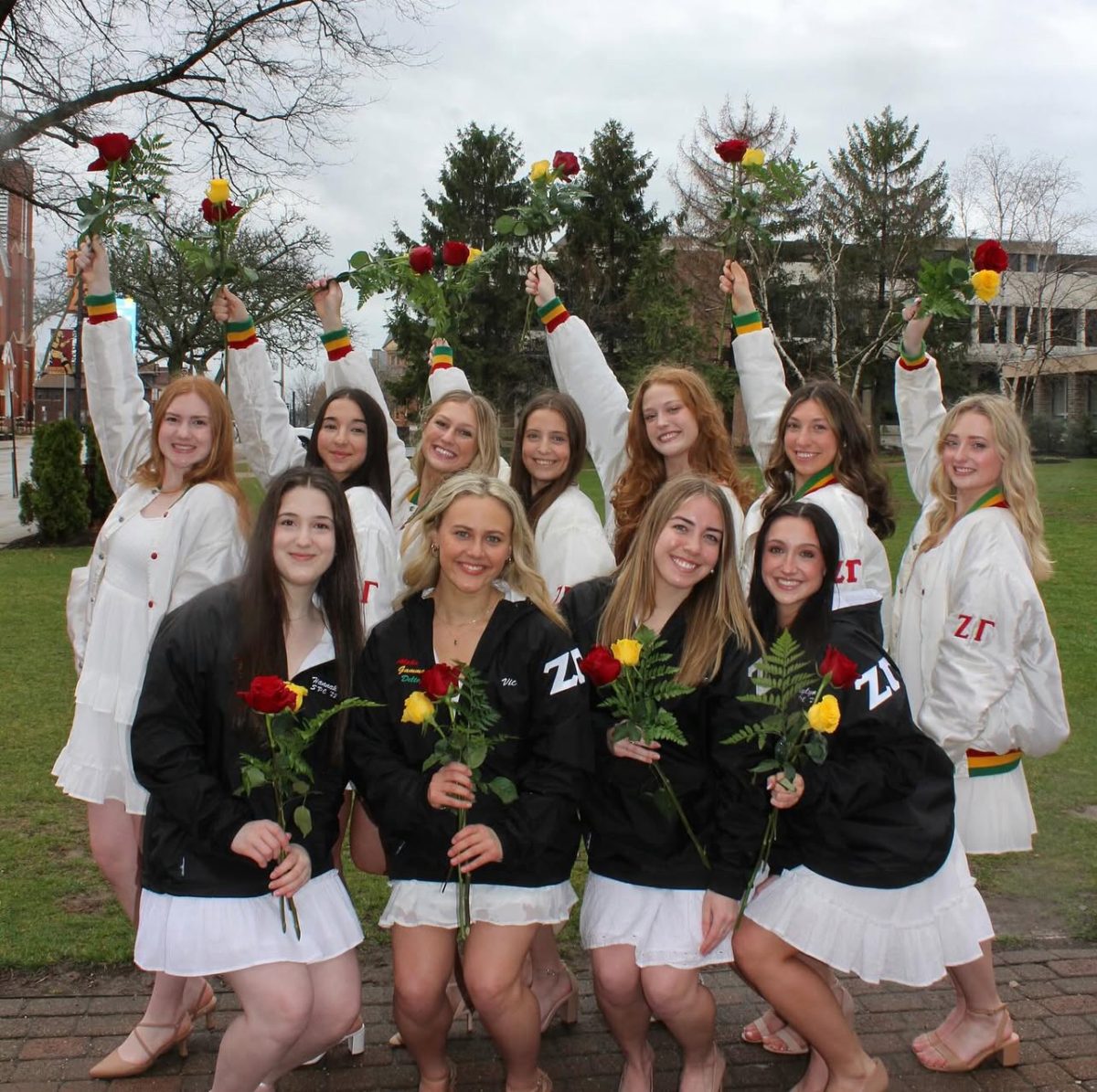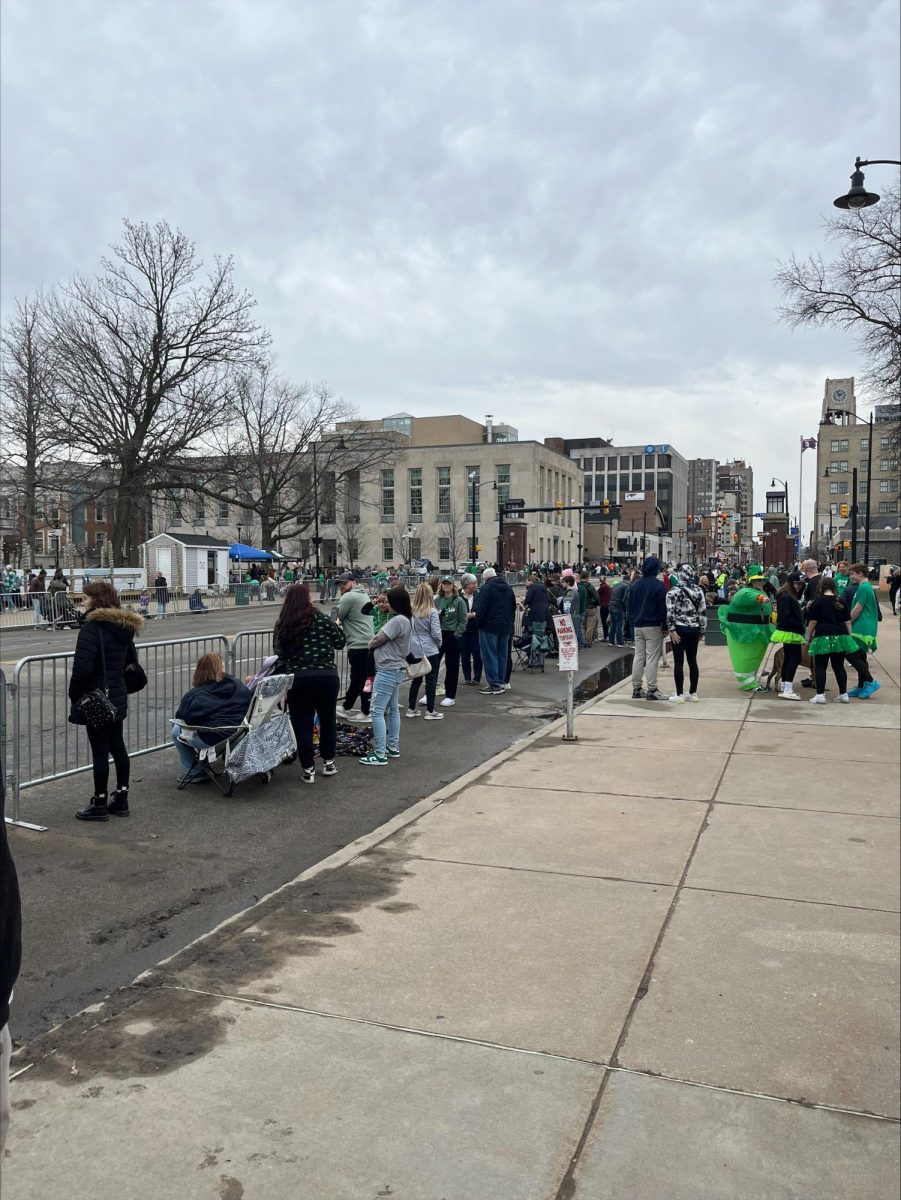The blare of an alarm clock signals the jolting weekday’s start for many college students. Day in and day out, students try to maintain a delicate balance of classes, work and fun. With the tug-of-war that they face between their various obligations, the notion of seeking out learning and self-discovery experiences can easily slip to the back burner.
So, when nine Gannon University students chose to travel to Yellowstone National Park during the summer to study biology, they probably didn’t make a conscious decision to alter the way they lived. Nevertheless, they came back changed individuals – Yellowstone allowed for the trip of a lifetime that has permanently impacted their view of the world around them.
Since 1994, Gannon biology professors Steve Ropski and David Gustafson have organized 27 trips to Yellowstone for a summer biological travel study open to Gannon students of all majors. Planning is currently underway for the 28th trip, scheduled for the summer of 2012.
In addition to the nine Gannon students, three area high school teachers attended the 2011 trip, which ran from June 20–30. Upon completing the trip, attending students earned three academic credits, and high school teachers brought their experiences from Yellowstone back to their classrooms.
However, sophomore physician assistant major Lexie Mastro said that the trip is about much more than academic credit. “It was all about letting Yellowstone come to you,” she said. “Whatever you learn while you’re there, it’s something really monumental that’s going to affect your life forever – I learned to reprioritize, and that it’s OK to be selfish sometimes.”
Junior biology pre-veterinary major Julie DeDionisio said that the trip was life changing. “It really opened my eyes to how beautiful Yellowstone really is,” she said. “I’ve never really seen anything outside of Presque Isle, but to see Yellowstone, and all the trees and flowers…it was like wow, this is my world.”
The fervent passion that Ropski and Gustafson have for the Yellowstone trip comes across not only in their testimonies, but also in the sheer amount of work that they do in preparing and conducting the trip. Gustafson said that on the trip, he and Ropski teach from about 5 a.m. – 10 p.m. every day, while also driving the van and getting meals for the students.
“It takes complete dedication,” Gustafson said. “Some of my colleagues think I’m nuts, but I wouldn’t trade a minute of it.”
Ropski said that the Yellowstone trip allows students to learn in ways that he could never teach in the classroom. “When you see a grizzly bear lumber across the road toward your car, and maybe it looks at you – the fear, learning, excitement, terror, all in one swoop – I can’t teach that,” he said.
Ropski and Gustafson have become well versed with the park through the 27 trips that they have taken, and they are committed to providing students with real, up-close exposure to Yellowstone. In fact, Ropski had a book published that highlights attractions at Yellowstone that tourists normally wouldn’t know about: “Let Yellowstone Come to You: A Non-Tourist Guide to the Park.”
“We got to see things and do things that we wouldn’t have been able to do if we wouldn’t have gone with them,” said senior biology major Megan Schmitt in regard to Ropski and Gustafson’s tour guide skills.
Gustafson told the story of an 8-year-old boy who tugged on his pant leg, excitedly describing an elk that he had seen with his family earlier that day. “If his family would have walked out of the car and over the knoll, they would have seen a herd of 300 elk,” he said. “We were on the other side of the knoll.”
Gustafson said that he wished other tourists would experience the nitty-gritty of the park like he does with Ropski and the Gannon students. “Get out of your car and walk through the alpine meadow,” he said. “Step in the bison dung, see the wolves, experience the system.”
Ropski said that each day of the trip has a different theme, with a break in the middle of the week for white water rafting and horseback riding. Themes for the day include wolves, bears, fires, geysers and hot springs, herbivores and geology.
The group traditionally also visits the Grand Canyon of the Yellowstone and the Museum of the Rockies. Ropski said that the Grand Canyon of the Yellowstone is insanely beautiful, and looks like a rainbow of colors covering the river and canyon.
DeDionisio said that on the last day of the trip, three wolves were chasing an elk, and at the end of the day the group could hear the pack howling. She said that the experience ended the trip nicely, as it was the group’s favorite evening.
“The sound of the wolves howling – there’s nothing like it,” Ropski said. “For a lot of people, this is the trip of a lifetime.”
Gustafson said that exploring Yellowstone with students 27 times has been a touching experience. “For me, to walk through an alpine meadow with students…it looks like someone dumped a bucket of paint down the mountain, the yellows, purples, magentas – you literally can’t walk without stepping on a flower,” he said. “When I go back, I can still see groups from years ago – I can still see them sitting on the rocks.”
Schmitt said that the beauty of Yellowstone and learning about the ecosystem helped her put things into perspective. “When you’re standing on top of a mountain and looking down at the valleys and trees and you see everything and know how it was created – it’s awe inspiring,” she said. And, DeDioniso said that the beauty of the park made her more environmentally aware.
However, both the professors and students said that the trip is about even more than simply seeing nature. Gustafson said that while the animals, flowers and hot springs all create the Yellowstone experience, there’s something more that has been a part of his life for the years he and Ropski have led the trip.
Mastro said she learned a lot from the monumental conversations she had with Gustafson, who told her that she should reprioritize her life. “He’s the only reason that I made a bucket list,” she said. One of the things on her list is to go back to Yellowstone to climb Elephant Back Mountain.
“I learned that sometimes, it’s OK to do things for yourself,” Mastro said. “I really did reassess my life and I really am doing things for myself now.”
Gustafson said that as part of Lifecore, Gannon asks its students how they will live their lives. “Gannon is constantly plaguing us with this question, and Yellowstone is our way of asking it, too,” he said. “The trip asks, will there be time to enjoy nature in your life, to preserve the earth, to share?”
Schmitt said that the trip was definitely life changing for her, and that it impacts her daily life back at Gannon. “I’m able to apply those things in my classes, and I can better understand the concepts,” she said. “Instead of just picturing something, I’ve actually seen it.”
The trip is still affecting Mastro, as well. “It makes you think about all these different things because you’re in one of the most beautiful places that the U.S. has to offer,” she said. “Things like how you let yourself be vulnerable.”
Ropski said that he and Gustafson feel lucky and blessed to be able to take students to experience Yellowstone firsthand. “How can I describe the beauty of Yellowstone in pictures?” he said. “That’s so one-dimensional.”
Through the beauty of Yellowstone, Ropski and Gustafson provide students with much more than just a biology lesson. “To describe the Yellowstone trip in one word – discovering, not only about nature, but about yourself,” Gustafson said. “Everybody comes back changed.”
Informational posters are placed throughout campus buildings for the upcoming 2012 trip to Yellowstone National Park. For more information, contact Ropski at [email protected] or Gustafson at [email protected].






